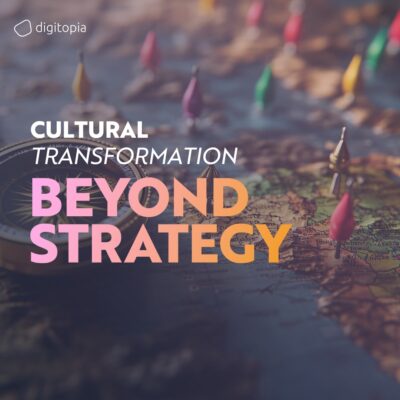Who is LC Waikiki?
Founded by three partners of French origin in 1988, LC Waikiki started its commercial life as a wholesale brand. Tema Tekstil, which is connected to Taha Group and is the producer as well as licensor of LC Waikiki in Turkey, bought the worldwide rights of the LC Waikiki brand in 1997. After the purchase of all the rights of the brand, the name of Tema Tekstil, belonging to Taha Group, was changed to “LC Waikiki Retailing Services”.

Taha Group, founded in 1988, bought LC Waikiki, which was born in Paris but grew in Istanbul, and brought it to its current level. Today, LC Waikiki acts in line with the vision of becoming one of Europe’s three most successful clothing brands until 2023. With the mission “everyone deserves to dress well”, the brand continues to grow with its own stores domestic and abroad, and with its franchise partners in countries with legal obligations. With the factories established in various cities of Anatolia, LC Waikiki continues to work on the production and export of the world’s leading brands. As of 2020, LC Waikiki is proud to reach 18.2 billion TL net sales, more than 50 thousand employees, 845 million USD export and more than 1100 stores.
Background of their Digital Maturity Index Decision
Digital transformation efforts at LC Waikiki have been ongoing since 2019, but the need for a professional to manage this process had first emerged in February of 2019. The LCW team began looking for its first CDO.
During the last one-and-a-half-year, the pandemic slowed life down considerably. We began working to adapt ourselves to the new digitalising world.
We prioritised four main topics. The first of these was product management, that is, we wanted to look at how much technology was being used in our business processes. It was important to know at which stages technology needed facilitation and at which stages raised more difficulty. The second important topic was data, which was one of the more popular topics. We aimed to measure how much we would benefit from data analytics in the decision-making processes to improve this process with artificial intelligence and machine learning technologies in the subsequent stages.
As the next main topic, we examined our way of doing business. We reviewed our organizational structure and adopted the agile working principle. The last main topic was our technology infrastructure. We re-evaluated how modern and up-to-date the other technologies we use from the cloud architecture are.
While we were advancing on these initiatives internally, our paths crossed with Digitopia. Our aim was to see the reflection of our work. We wanted to measure where the digital transformation actions we took brought us. This time, we wanted to include not only the IT team, but also business units such as marketing, human resources, board, and operation units; then our cooperation with Digitopia began.
The main purpose of our learning about our digital maturity was to transfer the digital transformation process to all teams instead of experiencing it only at the level of IT teams. Rather than the result, we want to see in the assessment we want to make, how much the business units reflect on their information technologies and data analytics competencies while managing their own processes.
A CDO managing its digital transformation journey needs to see how successful it is in its KPIs. Moreover, we needed to see to what extent not only CDO but also business units would internalize digitalization.
What is special about working with Digitopia?
One of the main reasons we do this cooperation with Digitopia is that they did this with an interactive discussion method instead of a standard questionnaire. By guiding our teams, they made us do the interrogation, and when necessary, they intervened and adjusted, preventing us from giving ourselves too much or unfairly fewer points.
Moreover, Digitopia, rather than others, has a method that includes six different dimensions with a broader perspective, instead of just dealing with IT-based approach. That’s the biggest difference I’ve seen.
Now we have a report showing us where we are in the global market. In the roadmap prepared for the point that we want to go to, there is a baseline consisting of a prioritized action list. We had lofty goals. When the action list came out, we evaluated each action item one by one. We discussed which ones were actually achievable. After all, we do not want to do goodwill hunting, even though we have high goals. If we wanted to make the result more concrete, we talked together about what it would look like. Therefore, we have a report that is more tailor made and easier to explain and understand.
Another useful method in the digital maturity model used by Digitopia was to make us think. It was not enough for us to think once while evaluating the situation. We talked about what we accomplished and what we missed in the previous state a year ago, we thought about whether we wasted time evaluating the current state and what we wanted to do differently in the next state we want to go to.
After seeing whether our digital transformation efforts were reflected to the whole team, our most important need was to see an international benchmark. Seeing more data and insights in the fashion retail market is invaluable. How fashion retail giants continue their digital transformation, how they adapted to the agile working principle, how they manage e-commerce, how they digitized supply chain management. Thanks to such comparisons, we can see in which areas we are leaders and in which areas we need to improve. They enabled us to see more benchmark data specific to the sector, to the market, and to the global.
Are you happy with the digital maturity index results?
At LC Waikiki, our strategy is tied to OKRs. One of our OKRs is now the annual Digital Maturity Index score. Therefore, we decided to repeat the digital maturity measurement every year.
The biggest benefit of consulting for companies is that sometimes it makes the things in front of our eyes more visible and prevents it from being postponed. Since we are racing against time in digital transformation, we must show all our strength. When we decided to measure our digital maturity, we knew that the most important thing for us was the action list, not our score. Although our score was above the global market average, the points we targeted for the next state were very high. Although the Digitopia team warned us about this, we decided to keep our target high. Now a challenging journey awaits us in front of us.




